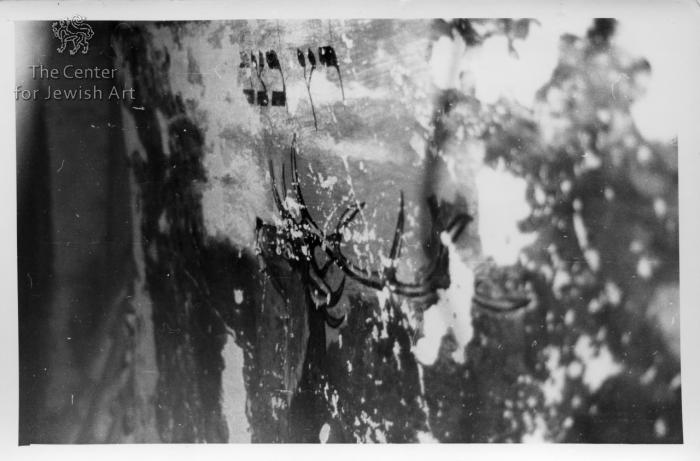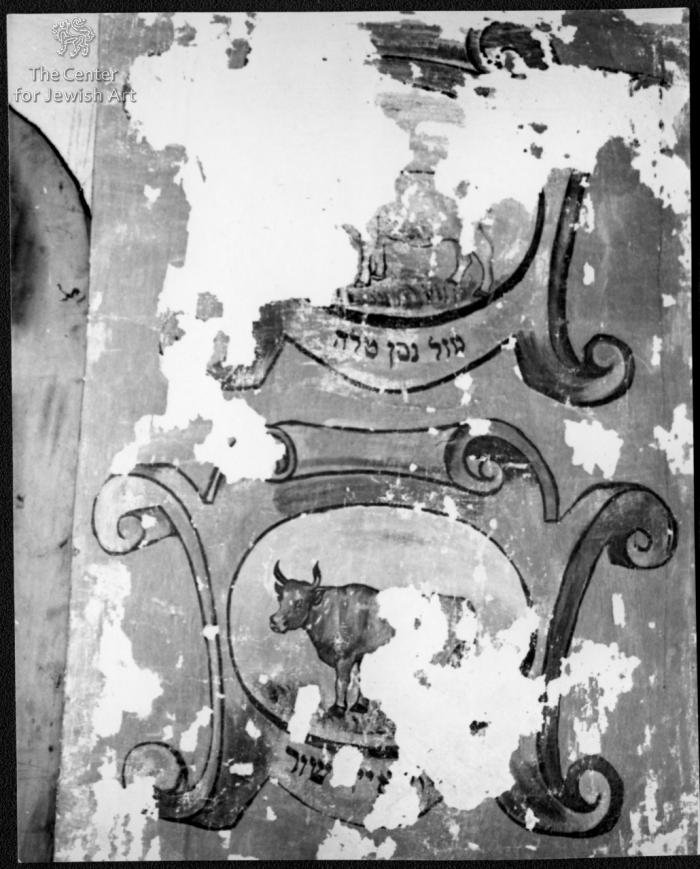Obj. ID: 10402 Great Synagogue in Chortkiv, Ukraine

The prayer hal of the synagogue was decorated witht the depictions of the Four animals (a tiger , an eagle , a dear , and a lion).
The running inscription הוי עז כנמר וקל כנשר רץ כצבי וגיבור כארי (be strong as the leopard and swift as the eagle, fleet as the gazelle and brave as the lion, Mishnah Avot5:20) corresponds to the images.
Other mural paintings included The Jaffo Gate in Jerusalem(Tower of David), The Western Wall, כרם היה לידידי, and Rachel's Tomb. On the western wall there were two paintings with frames to the memory of perished in pogroms.
Among the prayers written on the walls were אבינו מלכינו, ויהי בנסוע הארון, ספירת העומר, מזמור שיר ליום שבת.
On the ceiling the Zodiac signs were depicted.
In the windows of the east wall there were stained glass.
sub-set tree:
In 1739 and 1765 the community paid the owner of the town, Potocki, for the right to build a synagogue. The actual building started in 1754. The main donor was an artisan Meir Katz, who received, because of his donation, the right to participate in the election of the community officials. In 1770 the building of the synagogue was not finished yet, and the community decided to sale the places in order to raise additional funds. The inscription on the entrance to the prayer hall shows the date 1771. In 1779 the building was not completed, especially the staircase to the women's section, and a new fundraising had place. The local legends attributed the building of the synagogue to the Polish King Jan III Sobieski (1674-1696), or to the 16th century, or to the Middle Ages. According to one of the legends, the founding stone of the building was put by a Christian priest, and because of it the first prayers of the synagogue converted into Christianity (probably this is the echo of the Frankists conversion in 1759). Another legend is connected to the finishing of the building. It says that when during the Hungarian rebellion of 1848 the Russian army moved through Chortkov to Hungary, the building was rented to it, and the received rent was used to build the "dome of the synagogue". In 1781 a room next to the entrance was rented by the society of tailors Poalei Tzedek as their prayer house (it was called bizem keshene). By the tradition, there was no mezuzah on the door of the synagogue. Another tradition prohibited to light candles in memory of the dead during the Yamim Noraim before Yom Kippur. These traditions were probably connected to believe, that the dead souls gather in the synagogue for slihot prayer during the Yamim Noraim. In 1921 the building underwent repair. In the 1960s the building was used as a grain storage depot.















